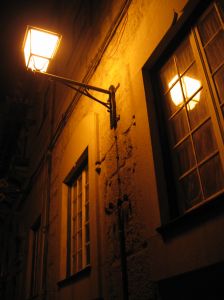
Lighting
The holidays of the last quarter of the year are all originated from firm faith systems. Christians commemorate the nativity of their King; the Jewish families observe Hanukkah or the Festival of Lights while the African-Americans celebrate Kwanzaa. For these celebrations, lights bear a very important meaning.
For Christmas, lights symbolise Jesus, the Star of Bethlehem and the hospitable homes of Christian believers who like to let the Little Lord Jesus know that He is free to enter into their homes and lives. The glowing Christmas star on the “Tannenbaum” is the small depiction of the Star of Bethlehem that placed itself right above the spot the much-awaited Saviour was born. It’s the very same star that directed the magi (or three wise men of the Orient) to the King.
For Christmas, lights symbolise Jesus, the Star of Bethlehem and the hospitable homes of Christian believers who like to let the Little Lord Jesus know that He is free to enter into their homes and lives. The glowing Christmas star on the “Tannenbaum” is the small depiction of the Star of Bethlehem that placed itself right above the spot the much-awaited Saviour was born. It’s the very same star that directed the magi (or three wise men of the Orient) to the King.
Christians additionally light the Advent Wreath; it has three violet candles and a pink candle for Lutheran and Roman Catholic practices. The 4 candles symbolize the four weeks of advent meanwhile their colours symbolize the penitential season for the purple candles and the rejoicing period for the pink one. The colours and number of candles vary for Protestant churches however; a few use blue, which is a hue that stands for waiting, and white, to signify the Christ candle. These days though, majority of of British Protestant churches choose to use four red candles and one white candle.
Jewish traditions on the other hand make use of the menorah. The importance of the lights of the menorah has largely to do with how the “Maccabees" triumphantly rebelled against Antiochus IV Epiphanes. According to the Talmud, a late text, the Temple was refined and the wicks of the menorah unbelievably burned for 8 days, even though there was sufficient sacred oil for one day's lighting. The burning of candles for each and every single night of the Festival of Lights is followed by the performing of special songs, the saying of the Hallel prayer, eating of fried Jewish treats such as potato pancakes that is called latkes and fried donut with filling labeled as sufganiyot, et cetera. The lighting of the candles is because of custom- the conception is that the lighting of the candles starts from the leftmost candle of the menorah to the right.
As for Kwanzaa, 7 candles are placed on a candleholder called a kinara. All these seven candles portray the seven principles of the African heritage; Umoja (Unity), Kujichagulia (Self-Determination), Ujima (Collective Work and Responsibility), Ujamaa (Cooperative Economics), Nia (Purpose), Kuumba (Creativity) and Imani (Faith).
All of these are great practices that are consistent with the transforming times. Candles are no longer limited to the wax and wick type precisely since protection has become a major concern. Electrical candles or LED candle lights are presently utilized in the observance of all these holiday practices since they are safer and more economical to use.
Jewish traditions on the other hand make use of the menorah. The importance of the lights of the menorah has largely to do with how the “Maccabees" triumphantly rebelled against Antiochus IV Epiphanes. According to the Talmud, a late text, the Temple was refined and the wicks of the menorah unbelievably burned for 8 days, even though there was sufficient sacred oil for one day's lighting. The burning of candles for each and every single night of the Festival of Lights is followed by the performing of special songs, the saying of the Hallel prayer, eating of fried Jewish treats such as potato pancakes that is called latkes and fried donut with filling labeled as sufganiyot, et cetera. The lighting of the candles is because of custom- the conception is that the lighting of the candles starts from the leftmost candle of the menorah to the right.
As for Kwanzaa, 7 candles are placed on a candleholder called a kinara. All these seven candles portray the seven principles of the African heritage; Umoja (Unity), Kujichagulia (Self-Determination), Ujima (Collective Work and Responsibility), Ujamaa (Cooperative Economics), Nia (Purpose), Kuumba (Creativity) and Imani (Faith).
All of these are great practices that are consistent with the transforming times. Candles are no longer limited to the wax and wick type precisely since protection has become a major concern. Electrical candles or LED candle lights are presently utilized in the observance of all these holiday practices since they are safer and more economical to use.
